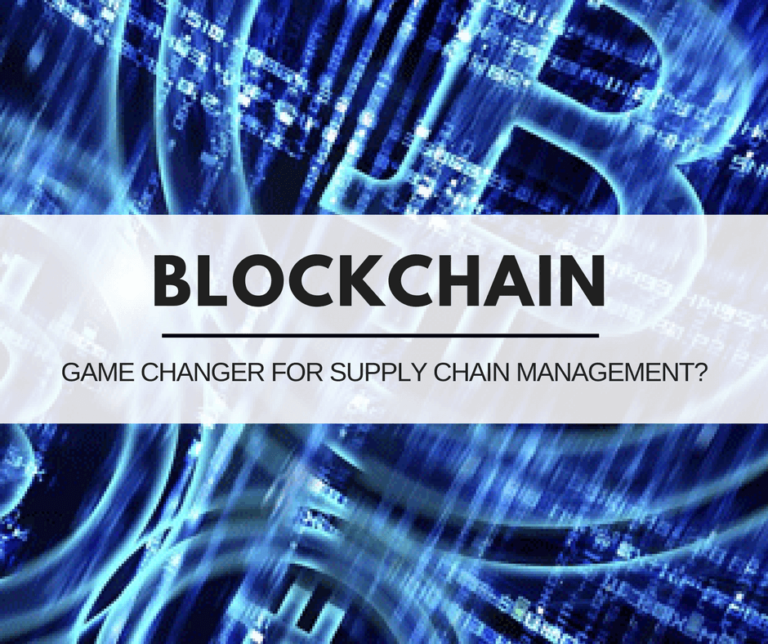SupplyChainTechTrends: Is blockchain coming of age?

Supply chain managers have yet to fully embrace the power of blockchain technology, say analysts, but the advance seems all but inexorable.
Two blue chip players in today’s global supply chain marketplace recently announced that they plan to introduce a “transformational” service designed to expedite ocean cargo shipping and mitigate supply chain risk.
Maersk, which has partnered with the Chinese e-commerce provider Alibaba, is now joining IBM in a widely-celebrated effort to introduce blockchain technology to link supply chain managers, freight forwarders, other ocean carriers, ports and customs authorities.
The blockchain solution, based on the Hyperledger Fabric and built by IBM and Maersk, is designed to help manage and track the paper trail of tens of millions of shipping containers across the world by digitizing the supply chain process from end-to-end to enhance transparency and the highly secure sharing of information among trading partners.
The solution enables the real-time exchange of original supply chain events and documents through a digital infrastructure, or data pipeline, that connects the participants in a supply chain ecosystem. It works something like this:
- Each participant in a supply chain ecosystem can view the progress of goods through the supply chain, understanding where an in-transit container is located. They can also see the status of customs documents, or view bills of lading and other data.
- Detailed visibility of the container’s progress through the supply chain is enhanced with the real-time exchange of original supply chain events and documents.
- No one party can modify, delete or even append any record without the consensus from others on the network.
This level of transparency is designed to reduce fraud and errors, reduce the time products spend in the transit and shipping process, improve inventory management and ultimately reduce waste and cost.
When adopted at-scale, says Maersk, the solution has the potential to save the industry billions of dollars. “We expect this to not only reduce the cost of goods for consumers, but also make global trade more accessible to a much larger number of players from both emerging and developed countries,” says Ibrahim Gokcen, Maersk’s chief digital officer.
Analysts note that the Danish super carrier is positioned to identify the best ocean lanes for the initial launch of this collaboration.
“Maersk will certainly know where the potential choke points are in the supply chain.” says Martha Bennett, Principal Analyst at Forrester Research’s London office. But, just how soon this strategy will be implemented is “the $64 million dollar question,” says Bennett.
The Holy Grail
For many, blockchain is the Next Big Thing. In an interview with The New York Times, Walmart’s vice president of food safety said he is convinced “that maybe we were onto the Holy Grail,” when driving a separate deal with IBM in recent months. He added that much of his faith is driven by the belief that blockchain brings together digital marginal economics, unit level entity identification and cutting edge cyber-security.
A new study from Deloitte – Industry 4.0 and cyber risk: Security in an age of connected production – also finds that blockchains have the potential to help mitigate current cybersecurity risks by streamlining the flow of goods and information.
But skeptics abound. Kevin O’Marah, chief content officer of SCM World, surmises that “it feels a bit like RFID déjà vu.” While blockchain may now be at the peak of Gartner’s “Hype Cycle,” its next stop could be the “Trough of Disillusionment.” O’Marah notes, however, that blockchain does not require devices like RFID, nor does it need reading hardware to be effective. He cautions:
“Understanding blockchain is now imperative, but this does not necessarily mean you should hurry into any projects or even pilots at this stage.”
Maturity Issues
One reason for moving slowly: Gartner estimates that 90% of enterprise blockchain projects launched last year will fail in the coming months – if they are not already dead. “Confusing future blockchain technology with the present-day technology is limited in scope, and falls short of meeting the requirements of a global-scale distribution platform that can enable the programmable economy,” says Gartner’s brand manager, Kasey Panetta.
The good news, however, may be that simply knowing where the frequent points of failure exist can help enterprises avoid falling into the same traps.
“For a project to utilize blockchain technology effectively, it must add trust to an untrusted environment and exploit a distributed ledger mechanism,” Panetta says.
Panetta continues:
“Private blockchain deployments relax the security conditions in favor of a centralized identity management system and consensus mechanism that obviates the trustless assumptions.”
To correct this, analysts agree, enterprises must create a “trust model” of the entire system before the existing platforms out there reach any real level of maturity.
Source: Supply Chain Management Review